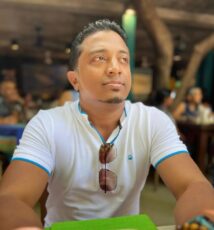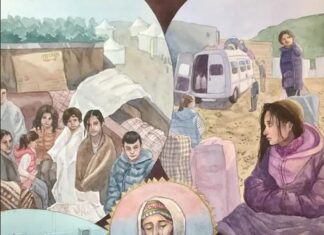BERLIN — A hundred years ago Berlin was the scene of a criminal trial which was to go down in history. The Armenian Soghomon Tehlirian stood trial for the murder of Talaat Pasha, whom he shot on March 15, 1921 in broad daylight. Talaat was the former Interior Minister of the Young Turk regime who had masterminded and directed the genocide against 1.5 million Armenians and countless other Christian minorities.
In the last week of October 2021, a group of human rights activists, historians, actors, musicians and jurists joined to commemorate these historic events, retracing the steps and actions of the protagonists, to reflect on their significance in the development of fundamental concepts of international law.
The Working Group Recognition – Against Genocide, for Understanding among Peoples (AGA) organized the commemoration in three events on October 24, 26 and 29: the first was a guided tour by genocide scholar and AGA Chairwoman Tessa Hofmann, down the Hardenbergstrasse, the street in Berlin where Tehlirian had shot and killed Talaat; the second featured a lecture by Hofmann on the importance of the subsequent trial in legal history, accompanied by readings from the trial testimony and from literary works dealing with the Armenian Genocide. The final event was a condensed re-enactment of the trial, held in the very same courthouse where the legal proceedings had unfolded.
Dr. Gerayer Koutcharian, AGA founding member, explained why Armenians commemorate the Hardenbergstrasse. In the genocide that began under Sultan Abdul Hamid II in the late 19th century and reached its climax in 1915-1923, Koutcharian said, an estimated “three million Christians were killed and more than 2 million more expelled and deprived of their citizenship.” The motivation? To establish a “Great Turan” of Turkic-speaking peoples stretching from the Adriatic to China, a vision, according to Turkish President Recep Tayyip Erdogan, that is still being pursued in the unlawful aggression in Artsakh.
Hundreds of thousands of Genocide survivors, Koutcharian said, were “morally and spiritually broken” when they learned that the perpetrators had found refuge in post-war Germany, and “thirsted for revenge.” Thus the importance of this site in Berlin: “When Armenians come to Berlin,” he said, “they look for the place where they feel Soghomon Tehlirian in 1921 reestablished the dignity of their people. And that is why they go, their heads held high, to the Hardenbergstrasse.”
The impact of those events was to be felt not only in Germany and on the Armenian community, but worldwide, and forever after, as Hofmann detailed in a speech, “From Assassination to UN Convention: The Berlin Criminal Trial against Soghomon Tehlirian and Raphael Lemkin’s Consequences for International Law.”












